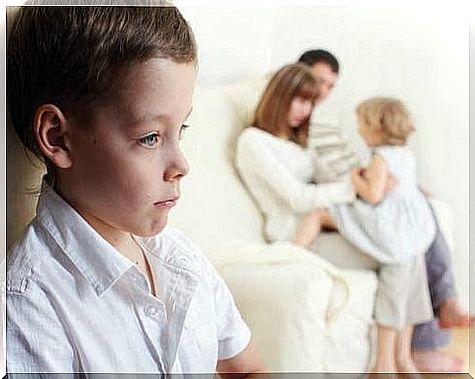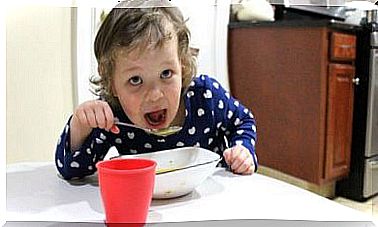Does The Favorite Child Exist?

Everyone loves their children equally until science proves otherwise. Several studies prove that, even though it is difficult to assume, the “myth” of the favorite child is a proven reality. As Jeffrey Kluger says, “95% of parents have a favorite child and the remaining 5% lie.”
However, it seems that few mothers agree with this statement. In this article we will look at both postures.
Experts say that it is natural that different children arouse different emotions, so they can establish more fluid relationships with one child than another for reasons of affinity and personality. This controversial conclusion, which generated controversy, came after several scientific works on this issue.
Find out in this article why it is said that the favorite child exists, the exhaustive research that was carried out to reach this conclusion and the impact of predilection on family dynamics.
According to science, you have a favorite child
A study conducted by Katherine Conger, professor of Human Development and Family Studies at the University of California, showed that 65% of fathers and 70% of mothers preferred one of their children, usually the oldest child. Conger’s team analyzed nearly 400 families for three years.
The analysis showed that predilection is associated with the order of birth of children. Far from the typical “everyone likes the same way” of all parents, many claim that favoritism is a natural and inevitable mechanism to ensure the survival of the species.
“The biological and narcissistic act of reproducing itself in future generations encourages parents to prefer the older or healthier child, as this will be more successful at the time of reproduction,” says Kugler. Furthermore, changes in the treatment of each descendant were noticed according to the order of birth.
Along the same lines, neuropsychiatrist César Sierra guaranteed that there is a predilection determined by the place that each mother or father gives – unconsciously or spontaneously – to each descendant, depending on factors such as the context of pregnancy, birth and childhood.

What is the impact on family dynamics?
“Favoritism affects the relationship between all members of the family,” said psychoanalyst Ellen Libby, who also states that this factor can incite sibling rivalry. According to experts at parenting.org, siblings compete for their place in the family and for parental attention.
A Cornell University study looked at the bond between mothers and adult children in 275 households to study the relationship between maternal preference and depression. Two-thirds of these mothers were found to have a favorite child, who experiences feelings of guilt and the obligation to care for their parents in the future.
The relationship dynamics of many families are affected by the preference for a child. Psychologist María López says that this situation “frequently presents itself at different times in life”. This is the case, for example, of families that have a king and, years later, a little princess arrives.
Favorite children according to mothers
Despite what science says, we see that a mother’s feelings are different. So we can say that 100% (to put it in numbers) of mothers guarantee that they love their children in the same way. How is it possible to love one child more than another?

Often, siblings are polar opposites. Maybe one is smarter, but the other is kinder. Both are qualities that mothers love and that make the two children different. But they are both children of the same mother and deserving of the same love.
Good parents try to be equitable, giving the same to one child and another when it comes to love, attention, and even financial aspects.
Sometimes the question is not whether a child is favorite or not, but who can sometimes contribute something his sibling can’t, and vice versa.
We illustrate the point like this: let us suppose a mother who likes to sew and has two daughters. One of them also likes to sew and the other doesn’t. If the mother starts sewing, of course she will call the daughter she likes to share the moment with her. Perhaps the other has a talent for drawing, so the mother can ask her to draw it or paint some landscape to put together in the fridge.
Each child can contribute in different ways and it is the parents’ responsibility to make them realize that they are valuable, based on an equitable relationship in all aspects.









